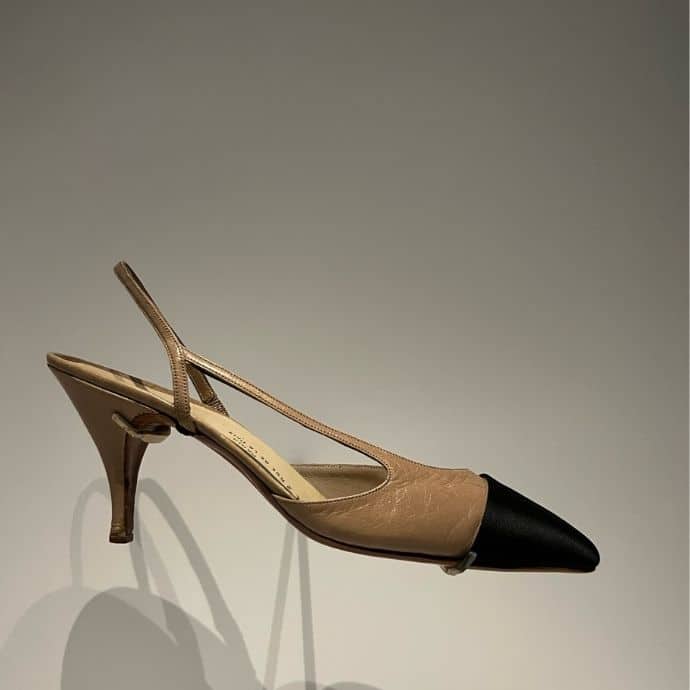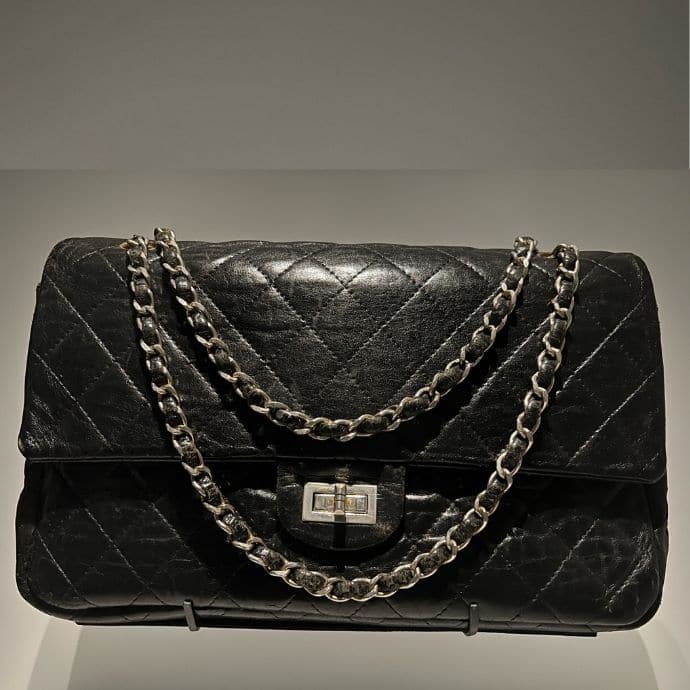[ad_1]
Exhibition: Gabrielle Chanel, Fashion Manifesto currently on display in National Gallery of Victoria and what struck me as I wandered through the display of her 100+ gorgeous outfits was what you could learn about wearing black from Chanel.
Chanel was the instigator of black as a fashion color. Before that, black was only for mourning or service. He personally disliked the bright jewel colors of the day, as he thought they were more appropriate for the scene. His own coloring worked well with black, as it was “dramatic.” Bright were the staples for cool bold colors and black and white, and since most designers have started designing what they want to wear, it’s no surprise that he likes black.
Still, he should have said, “There is nothing harder than a little black dress” and when you compare his designs with today’s designs, you can see that his black clothes are a cut above anything made in bulk. -market retail world today. What black does is provide a very vague outline to the body so you can really see the edges and shape of the garment (and the shape of the wearer).
Here is an example of a suit from the 1920s. The lining of the suit matches the bottom top and the white of the lining takes on the harshness of the black worn alongside the face throughout the day. Even though he says, “To me, simplicity is the essence of all true elegance.” This pattern is complex and if you look carefully you will notice a belt at the waist, buttons at the top and a bow at the collar plus cuffs showing the same pattern. Not a simple black suit by today’s standards!
Another black suit – again elegantly crafted in black fabric with a metallic speck that gives it a life and movement not found in black clothes. Note again the white lining at the collar (matching the white top) and the rose fabric brooches. The white collar removes the shading and aging effect of black from the face.
Check out the detail embroidered with trumpet beads on this gorgeous black night number. The light reflected from the beads and the complexity of the design take this outfit from simple and ordinary to something far more extraordinary.
Although Chanel described black dresses as something anyone could wear (you didn’t have to be rich to own a black Chanel dress – her little black dress was known as the Moda Ford – it’s a kind of uniform for all women of all tastes, whatever their lifestyle, no matter what their lifestyle) ”) may have helped to identify black with elegance and simplicity, but the hand-sewn finishes, superior fabrics and construction techniques and ornamentation meant they were meant to be. far from understated or affordable for the masses.
It is also important to remember that indoor lighting was not as bright and harsh as it is today, and that black is more reflected in the evening than during the day, under soft lighting, with face-appropriate transparency or fabricated shimmer. It doesn’t have the toughness on the skin that many black garments have today.
Sequins reflect light, shimmer and shine, and draw attention to shape and structure.
There is nothing plain, really simple, boring or bland in the construction and fabrics of each of these little black dresses, again designed by Chanel. Notice how the dresses have a lower neckline or a sheer panel closer to the face to soften the dark shading effect of black.

When you get close to these dresses, you can see the level of detail in the design and construction. I love that the silk of the bodice is wrapped around the velvet bands to make it look like these two fabrics are woven together.
Red was a color Chanel would use in her evening dresses (and sometimes navy blue). The red bodice softens the black and note the elegant construction that uses the (diagonal) slope of the fabric to create shape and movement in the dress as the wearer dances through the night.
Chanel was inspired to use black as a background so you can accessorize it and make it look different.
Even the two-tone pump was designed with practicality in mind.
The beige color of the upper lengthens the leg, while the black nose, which is the first drawn part of the shoe, provides a more practical and sturdy shoe that is easier to polish and makes the foot look smaller.
The 2.55 bag – designed to be functional with its iconic leather and chain strap – the leather wrapped around the chain was made to prevent the chain from swinging, making it easy to carry over the shoulder. Inside were multiple pockets where various items could be stored, including a lipstick compartment.
And why is it called the 2.55 bag? In a typical pragmatic Chanel fashion (as in perfume number 5), this is because it was first launched in February 1955.
So what can we all learn from Chanel’s use of black in clothes? This embellishment and graceful construction takes a black dress from boring and dull to elegant and elegant. That these are clothes made for the night, not the day. Stylish and timeless designs had practicality and comfort (no corsets), black was never boring, there was movement and life.
[ad_2]
Source link












